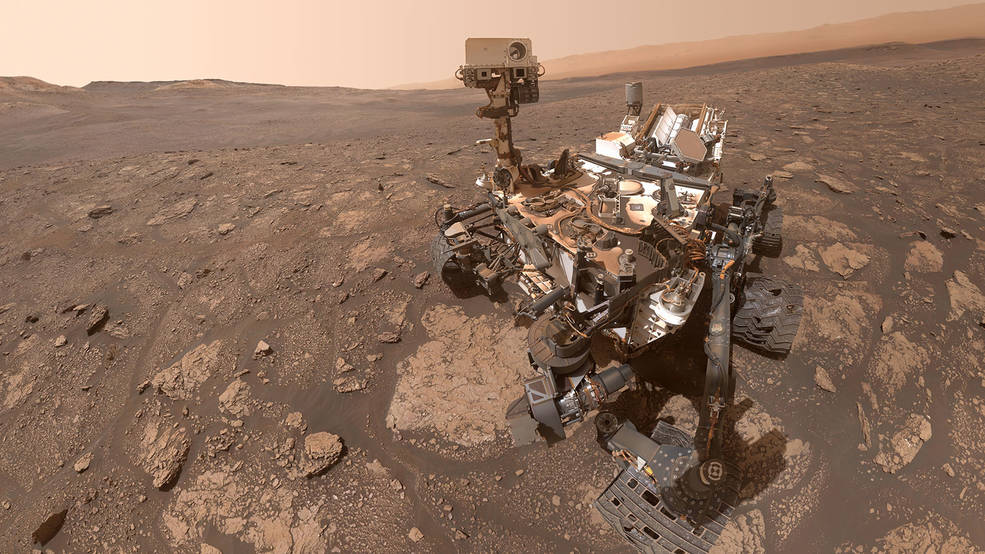The search for life—even ancient life—on Mars is trickier than we thought. In a recent study published in the journal Astrobiology, researchers have determined that NASA’s Mars Perseverance (Percy) Rover will have to dig two meters (6. 6 feet) beneath the Martian surface in order to find traces of ancient life.
This is because the surface of Mars is constantly bombarded with extreme levels of solar radiation that scientists hypothesize would quickly degrade small molecules such as amino acids. The reason for this extreme level of radiation is due to the absence of a magnetic field, which scientists believe was stripped away billions of years ago when the planet’s liquid outer core ceased to produce the dynamo that created the field. NASA’s Curiosity Mars rover took this selfie at a location nicknamed “Mary Anning” after a 19th century English paleontologist.
Curiosity snagged three samples of drilled rock at this site on its way out of the Glen Torridon region, which scientists believe was a site where ancient conditions would have been favorable to supporting life, if it ever was present. (Credits: NASA/JPL-Caltech/Malin Space Science Systems) “Our results suggest that amino acids are destroyed by cosmic rays in the Martian surface rocks and regolith at much faster rates than previously thought,” said Alexander Pavlov of NASA’s Goddard Space Flight Center in Greenbelt, Maryland. “Current Mars rover missions drill down to about two inches (around five centimeters).
At those depths, it would take only 20 million years to destroy amino acids completely. The addition of perchlorates and water increases the rate of amino acid destruction even further. ” Given that Mars is believed to have liquid water—and possibly life—billions of years ago, exploring at these shallow depths could make finding evidence of such life moot.
The research team subjected several types of amino acids to simulated conditions on the Red Planet, to include vacuum conditions and varying temperatures. The reason for this is because Mars exhibits conditions much different than the Earth, to include an atmospheric pressure literally a fraction of our own and far colder temperatures. For this study, the researchers exposed some of the samples to room temperature, which is the warmest it gets on the Red Planet, while other samples were exposed to a much chillier minus 55 degrees Celsius (minus 67 degrees Fahrenheit).
With the climate conditions established, the samples were then blasted with various levels of gamma radiation—simulating cosmic rays dosage equivalent to about 80 million years of exposure in the Martian surface rocks. To simulate the Martian regolith, the amino acid samples were mixed in both silica and hydrated silica, the latter of which is a combination of silica and perchlorate. The results of the study suggest that even low-molecular-weight amino acids present in the top 10 centimeters (4 inches) of the Martian surface regolith could degrade as quickly as approximately 20 million years, which falls far short of the current hypothesis that life might have existed on the Red Planet billions of years ago.
The results also suggest that the degradation occurs even faster with the presence of elevated abundances of hydrated silicate materials and perchlorates. “Our work is the first comprehensive study where the destruction (radiolysis) of a broad range of amino acids was studied under a variety of Mars-relevant factors (temperature, water content, perchlorate abundance) and the rates of radiolysis were compared,” said Pavlov. “It turns out that the addition of silicates and particularly silicates with perchlorates greatly increases the destruction rates of amino acids.
” While the surface material on Mars is often referred to as “soil”, it’s important to note that the appropriate nomenclature is “regolith” which is also found here on Earth, but is often found mixed with soil, as well. The “soil” we are familiar with on Earth contains the proper nutrients and minerals to allow plants to grow, whereas we have not found such material on other planets—yet. About three billion years ago, the planet Mars was a much more hospitable place.
It had a much thicker atmosphere along with a strong magnetic field that repelled the punishing solar radiation so both liquid water—and possibly life—could survive on the surface. Rivers and streams flowed across the planet’s surface that filled ponds and even lakes that were much larger than what we see on present-day Earth. Unfortunately, this was not meant to last, as Mars is roughly half the size of Earth, and as a result it lost its internal heat much faster than our lively blue planet will in the long-term.
This heat loss led to the loss of the protective magnetic field, and this allowed the solar radiation to blast the surface, evaporating all the water, and with it, any remnants of possible life on the surface. Credit: NASA’s Goddard Space Flight Center Will we find remnants of ancient life on Mars, and is there still life present today? Only time will tell, and this is why we science! As always, keep doing science & keep looking up! Sources: Astrobiology, Eos, Space. com, Britannica, Space.
com (2) The post Mars Rovers Will Need to Dig Deeper If They Want to Find Evidence of Life appeared first on Universe Today. .
From: universetoday
URL: https://www.universetoday.com/156589/mars-rovers-will-need-to-dig-deeper-if-they-want-to-find-evidence-of-life/



